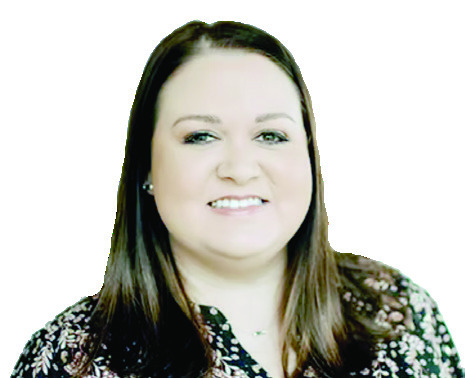PUBLISHER’S NOTE: Do you have an opinion about this opinion? Share it with us and the community in a letter to the editor! Letters may be submitted using this link: https://forms.gle/RmdQfYe86PtkTKp8A.
Just like most regions in the country, many folks in the Ozarks historically enjoyed celebrating Halloween.
Celebrations were typically expressed in the form of either pranks or parties. In 1907 for example, a “masquerade” was held at the Frost’s Hall in Cassville. That same night according to the local paper “The boys were out on a Halloween expedition and played all kinds of pranks.”
The most common pranks of that era seemed to involve the moving of items to unexpected locations. Residents might awaken on November 1st to objects such as chairs run up the flag poles, buggies moved into the middle of the street, crates and wood piles moved to block doors and sidewalks.
Now, we just move the clock every fall.
The tipping over of outhouses was also a common occurrence. In the 1930s, the soaping of windows seemed to become a more popular and less destructive form of pranking. In 1908, during a Halloween prank, Drury college student Calvin Finkle was shot and killed by Springfield City Officer Charles Finn. According to reports Finkle and another boy threw a white powder in Officer Finn’s face and ran off. The officer yelled at the boys to halt but when they continued, he drew his revolver and fired.
The officer claimed he only meant to scare the boys by firing into the air, but the gun went off prematurely. Finn was arrested and charged with second-degree murder, then acquitted after a trial the following spring.
The trend of participating in Halloween celebrations ebbed and flowed with the years. A 1901 item in the Cassville paper observed “old time celebrations are a rarity these days, and the custom of wrecking property and playing practical jokes has likewise fallen into decay.” Similarly, an item in the 1902 paper stated, “Last Friday was Halloween, but few people knew it had come and gone.”
As the twentieth century progressed, parties became more common. In 1904, a “phantom party” where attendees dressed as ghosts was given by the W.C.T.U., or Women’s Christian Temperence Union, at Woodsmen Hall in Cassville. Woodmen of the World is a fraternal organization similar to the Masons and I.O.O.F.
The second floor of the buildings along Main Street in Cassville across from the courthouse served as halls for these organizations. If you take a walk through a cemetery and notice a gravestone shaped like a tree stump, this was one of the benefits of being insured by the Woodman of the World.
In 1905, a “Tacky Party” was held on Halloween night in Cassville for the benefit of the cemetery association. In a tacky party, the guest would wear clothing that was out of fashion, antique, or tasteless, typically by raiding the closets and attics of elder relatives. I guess ugly Christmas sweater parties are a modern equivalent.
Having a Halloween party for the benefit of a cemetery seems so logical and obvious that one would think the fundraiser would be more popular, but I suppose Memorial Day has taken most of the attention of cemetery care.
In 1909, the Christian Church held a “progressive” supper on Halloween night, where after each course guests would change places as a social mixer. In 1911, the Silver Leaf Benefit Club held a Halloween social at the Opera House in Cassville where “music, recitations and fortune telling kept the Goblins away.” The Opera House was located on the second floor of the P.E. Horine furniture store on the Cassville Square, later known as the OTASCO building (Oklahoma Tire and Supply Company), currently the Barry County Abstract and Title Co. location.
The following year, the Silver Leaf Club held their party at the residence of Dr. S.W. Chandler, the Victorian style house located next to the recently vacated Barry County Jail in Cassville. A listing of attendees in the paper included many prominent Cassville family names of that time including LeCompte, Ray, Mitchell, Joslin, Brown, George, Thiele, VanHook, and Montgomery.
By the 1930s and 40s, Halloween programs at various schools were commonplace. Several of the extension clubs that started during the depression also organized Halloween gatherings. In 1939, the Thomas Hollow Extension Club held a masked affair at the Union Valley canning factory on the Fred Cole farm.
Although parties appeared to curb the worst of the pranking, incidents still occurred on occasions. In 1915, after a Halloween party at the Sands home, the nearby Horner Church caught fire and burned, with part of the collapsing building damaging headstones in the neighboring cemetery.
But, probably the worst prank played on Barry County residents was a tornado that wiped out Corsicana in 1943 the day before Halloween. The tornado destroyed the store, cannery and schoolhouse, as well as several homes and barns.
This incident seemed to be the last straw for the community that was once a prime area of the county. Originally named Gadfly, the place had been in decline since the Frisco railroad made towns such as Monett, Purdy, and Exeter more economically appealing in the 1880s. What little prosperity that was left was blown away that Halloween.
Events like this are a reminder that there are enough tricks in life, so wherever possible one should enjoy the treats and join the party.
Jeremiah Buntin is a historian at the Barry County Museum. He may be reached at jbuntin@barrycomuseum. org.





